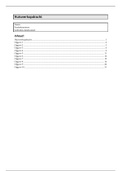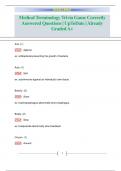Exam (elaborations)
Test Bank for Maternal Child Nursing Care 3rd CANADIAN Edition Keenan Lindsa Chapter 1
- Course
- ATI RN Mental Health
- Institution
- Chamberlain College Of Nursing
MULTIPLE CHOICE 1. Which is true regarding perinatal nurses? a. They provide care for only childbearing persons and babies. b. They require advanced practice education beyond an entry to practice degree. c. They work with patients and families from preconception throughout the child-bearing y...
[Show more]












